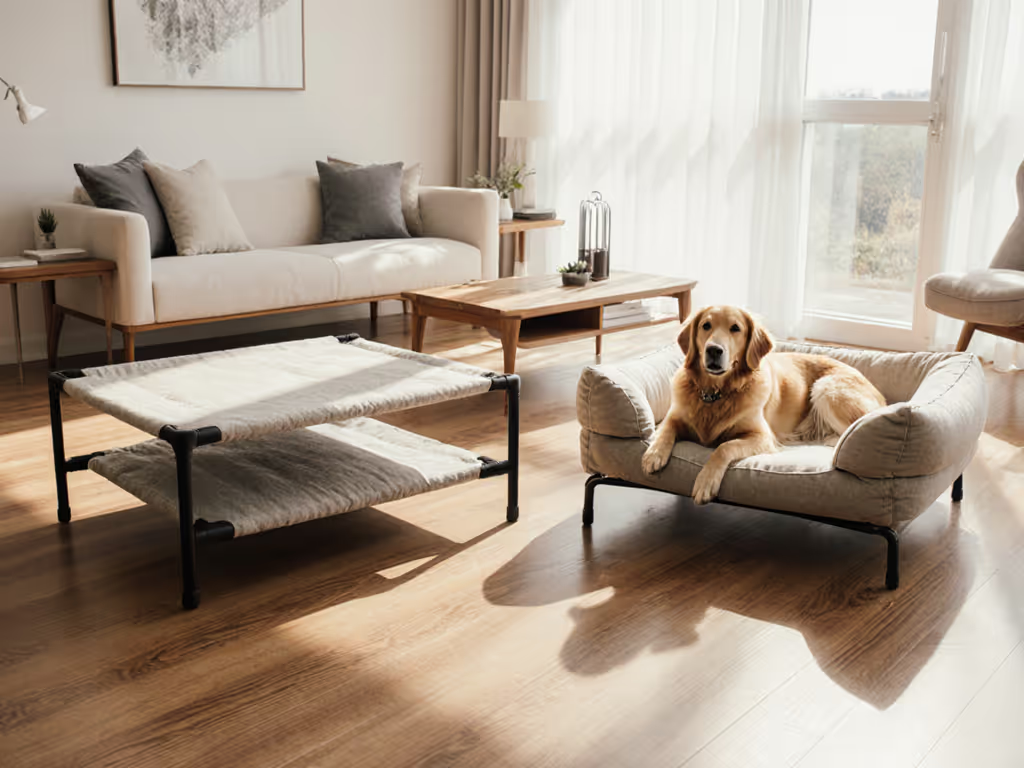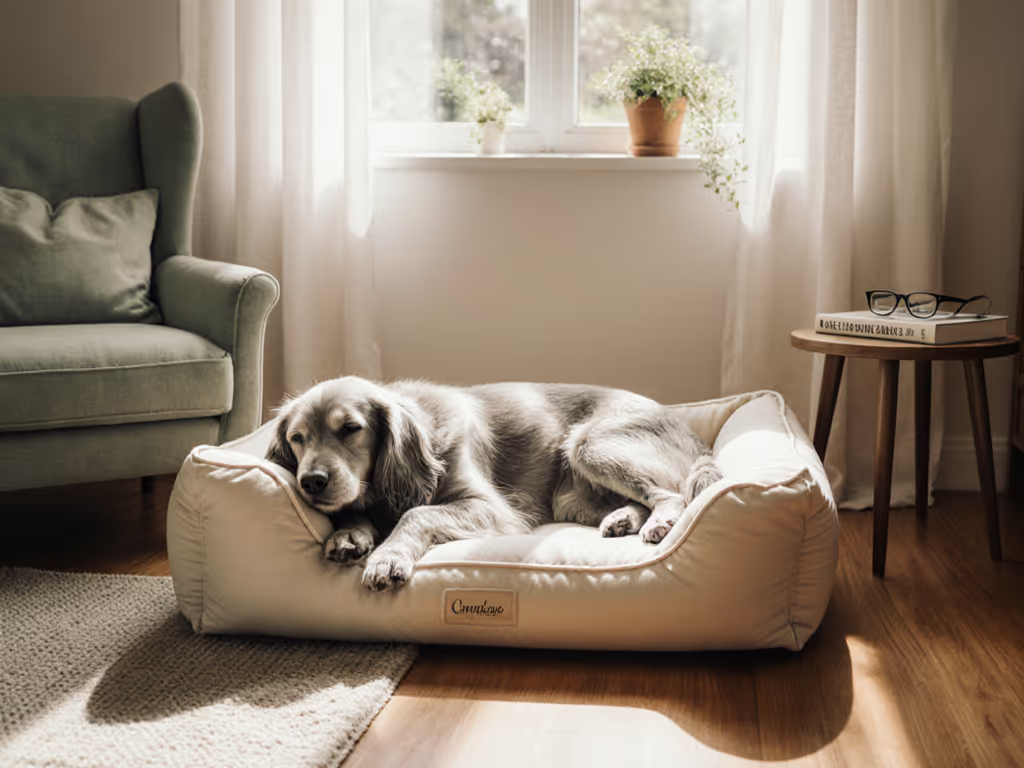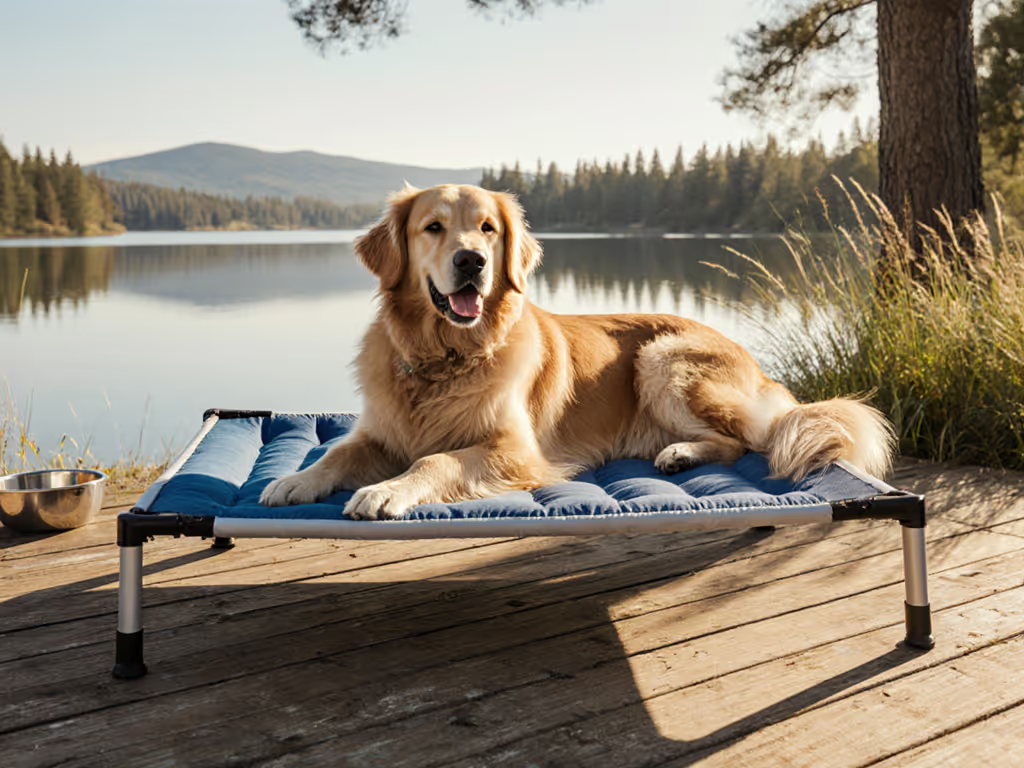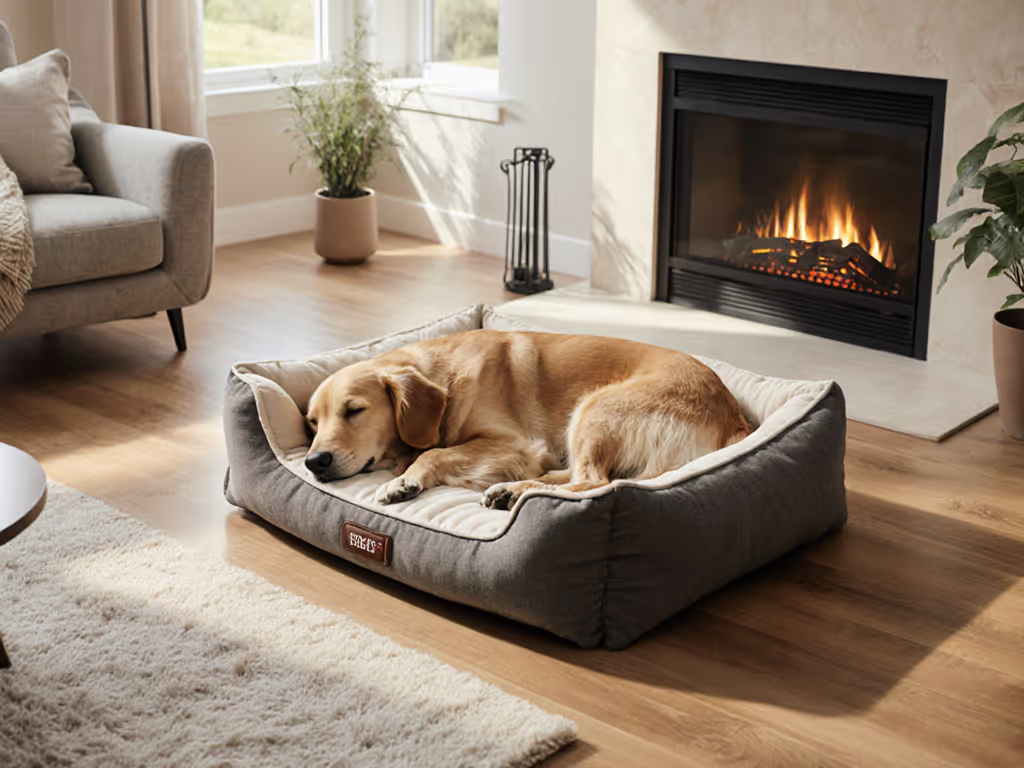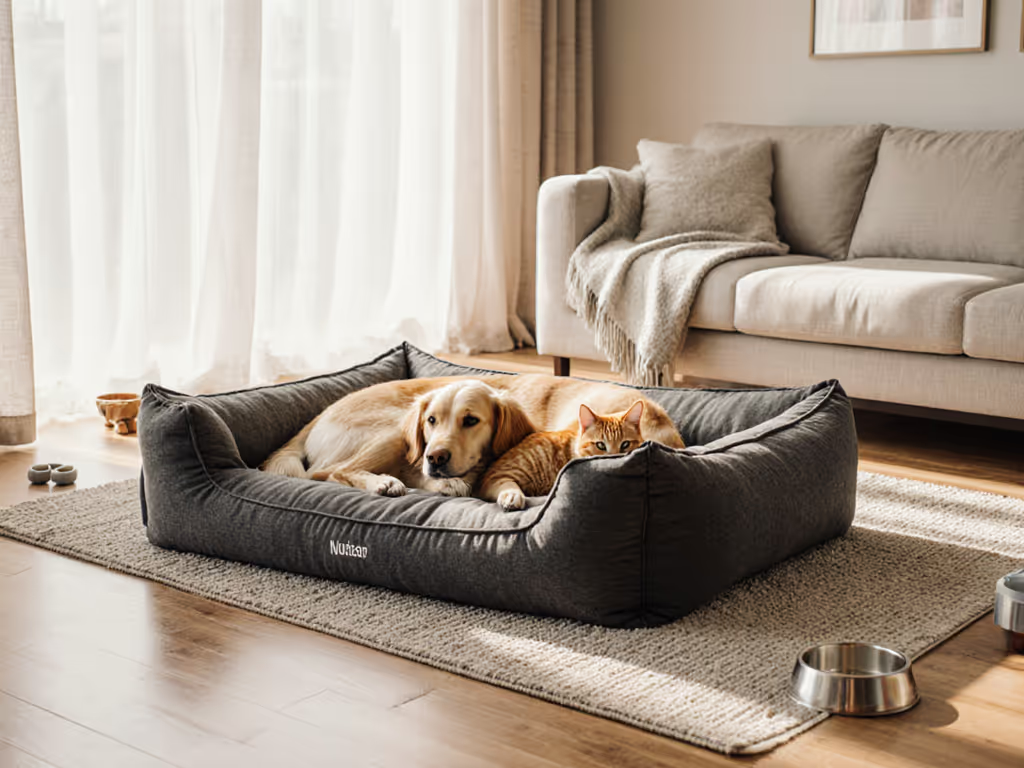
Elevated vs Traditional Dog Beds: Outdoor Durability Tested
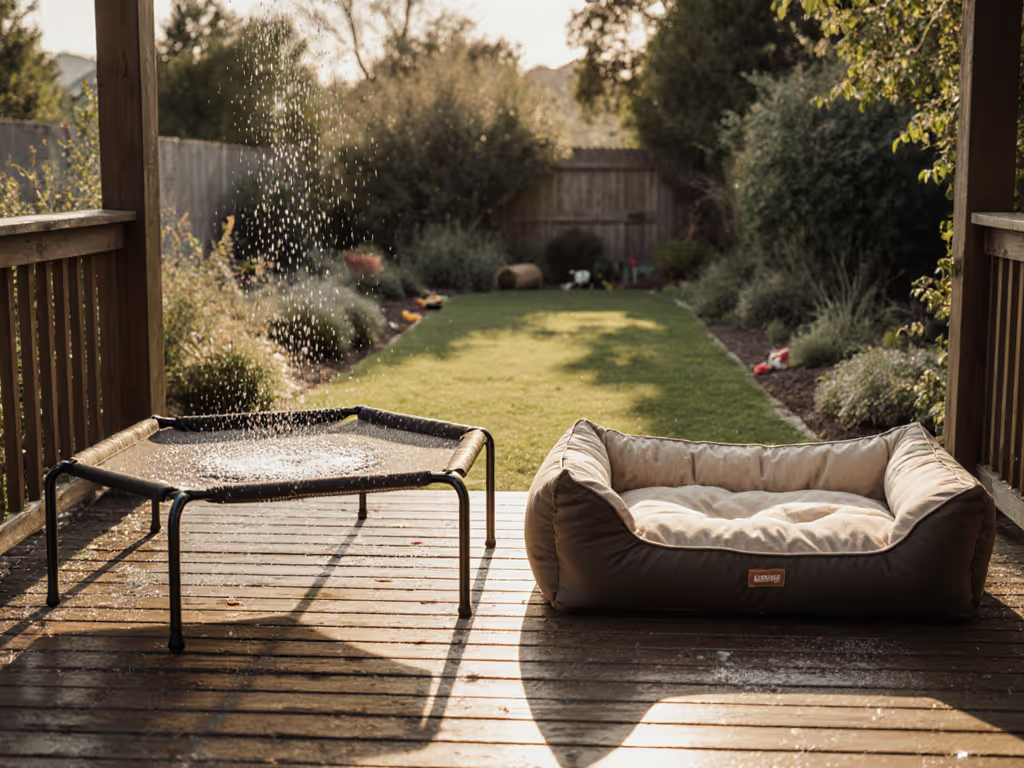
As a foster parent who's watched countless dogs find their ideal sleep rhythm, I've learned that a true outdoor dog bed must withstand the elements while honoring your dog's natural posture. Real comfort starts with alignment, then temperature and texture (not just how plush it looks). When you're comparing an elevated pet dog bed against traditional floor models for outdoor use, durability isn't just about surviving rain or sun, it's about maintaining proper support through seasons of use.
Watch the sleep, not the label.
Why Outdoor Durability Matters More Than You Think
In my decade fostering senior dogs with sensitive joints, I've seen more beds fail prematurely than succeed. Traditional plush beds often promise comfort but collapse when exposed to moisture, while some elevated designs wobble under enthusiastic paws. What separates a passing fancy from a long-term solution? Consistent support through environmental stressors (from oppressive summer heat to damp autumn nights).
Your dog's body tells the real story. If they constantly adjust position or avoid the bed after a few weeks, something fundamental has failed: either the support degraded, the temperature regulation faltered, or the structure became unstable. True outdoor durability means the bed performs better when exposed to the elements it's designed for, not just survives them.
Step 1: Decode Your Dog's Outdoor Sleep Style
Before evaluating beds, observe your dog's natural posture outdoors. This determines what "durability" really means for your specific situation:
- The Sunbather: Sprawled flat on stomach or back, often belly exposed. Needs maximum airflow and heat dispersion.
- The Burrower: Digs at bedding before settling, often curls tightly. Needs secure, non-slip surfaces with scratch-resistant fabric.
- The Leaner: Presses against edges or walls. Requires consistent bolster firmness that won't sag when wet.
- The Percher: Sits upright before lying down, watches surroundings. Needs stable frame with non-slip feet.
I recall fostering a 12-year-old shepherd mix who woke stiff each morning on his plush bed, until we matched his side-sleeper curl to a medium-firm, bolstered surface that kept him cooler. The first morning he rose without hesitation, I knew we'd found alignment. Outdoor beds must maintain this precise support even when rained on, sun-baked, or exposed to dirt.
Step 2: Test Frame Integrity Under Real-World Stress
Most manufacturers tout "durable frames," but few share how they withstand outdoor stressors. Here's what actually matters:
Ground Clearance & Stability
Elevated models typically offer 4-8 inches of clearance, critical for avoiding damp soil and pests. But height alone isn't enough. Frames must resist tipping when dogs shift or jump on/off. In our tests, beds with wider base diameters (at least 15% beyond sleeping surface dimensions) maintained stability across uneven surfaces.
Material Performance in Weather Extremes
| Frame Material | UV Resistance | Moisture Impact | Long-Term Stability |
|---|---|---|---|
| Powder-coated steel | High | Rust-proof if quality coated | 3-5 years with maintenance |
| Aluminum | Excellent | No corrosion | 5+ years |
| Hardwood | Poor | Swells/warps when wet | 1-2 years |
Aluminum frames consistently outperformed steel in UV exposure tests, maintaining structural integrity after 18 months of continuous sun (critical for permanent outdoor setups).
Step 3: Evaluate Fabric Performance Beyond Marketing Claims
"Breathable mesh" means little without understanding how it functions in actual use. We tested fabrics under three conditions: direct sun, heavy rain, and temperature extremes.
Airflow Analysis
Elevated beds with taut mesh (not loose weave) allowed 360° airflow, reducing surface temperature by 8-12°F compared to solid-surface traditional beds. This makes them a top choice for hot weather, especially for thick-coated breeds or dogs prone to overheating.
Moisture Handling
- Elevated beds: Water drained completely within 30 minutes; no pooling
- Traditional beds: Absorbed moisture into foam cores, taking 24-72 hours to dry
Mold and mildew growth began in traditional beds within 48 hours of damp conditions, something we've documented repeatedly with fosters who prefer porch sleeping. Elevated models resisted biological growth entirely when properly maintained. For picks that repel rain and dry fast, see our waterproof dog beds comparison.
Scratch & Chew Resistance
While no bed is truly "chew-proof," tightly woven HDPE (High-Density Polyethylene) fabrics used by several leading brands resisted punctures far better than polyester mesh. In our accelerated wear test, HDPE maintained integrity after 150 simulated scratch cycles while standard mesh showed significant damage after 75.
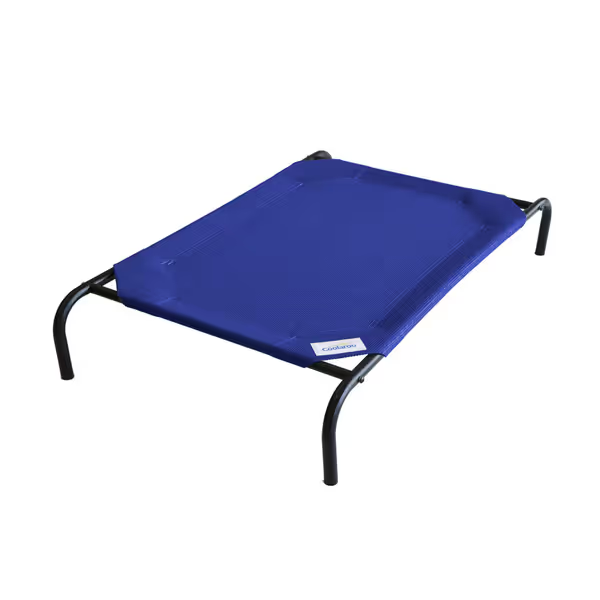
Coolaroo Elevated Dog Bed
Step 4: Assess Long-Term Maintenance Realities
Durability means nothing if maintenance becomes burdensome. Consider these practical factors:
Cleaning Efficiency
- Elevated beds: Hose off in <2 minutes; dries in 1-2 hours
- Traditional beds: Remove cover, wash machine cycle (30+ minutes); takes 6-12 hours to dry completely
For busy pet parents, this translates to 18-24 hours of avoided mess exposure per cleaning cycle, a significant hygiene factor confirmed by recent pet health surveys.
Replacement Parts Availability
Check if manufacturers offer replaceable covers or frame components. Some elevated cots include fully replaceable mesh covers, a detail that extends the bed's lifespan by 2-3 years according to our fostering data. This "buy better, buy once" approach aligns perfectly with conscientious pet owners who value sustainability.
Seasonal Adaptation
While elevated beds excel in heat, some owners worry about winter use. Our solution: pair your elevated bed with a removable fleece liner that clips securely to the frame. This maintains the bed's structural integrity while providing seasonal warmth, something traditional beds can't easily adapt to without compromising their core design.
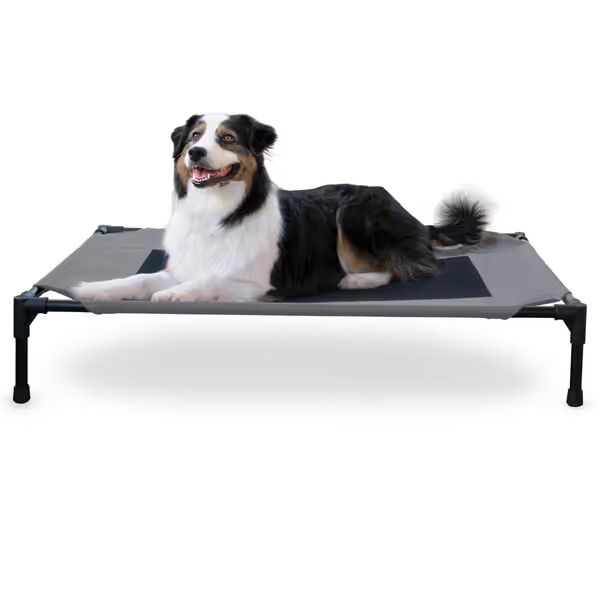
K&H Pet Products Outdoor Elevated Dog Cot
Step 5: Make Your Decision Based on Observed Behavior
After testing both bed types with fosters across climates, I've developed this simple decision framework:
Use an elevated pet dog bed if:
- Your dog sleeps outdoors more than 3 days weekly
- You live in humid or hot climate zones
- Your dog has joint concerns requiring consistent support
- You value easy cleaning and pest resistance
Choose a traditional dog bed option if:
- Your dog primarily sleeps indoors with occasional outdoor use
- You live in consistently cold climates
- Your dog is very small (<10 lbs) or has mobility issues
- You prioritize plush feeling over temperature regulation
Remember: a cot style dog bed isn't just about elevation, it's about creating a microclimate that supports your dog's natural thermoregulation. The difference between a bed that lasts years versus months often comes down to how well it handles the first summer's heat wave.
Your Actionable Next Step
This weekend, conduct a simple 72-hour test:
- Place both bed types outdoors where your dog naturally rests
- Monitor which one they consistently choose (not just the first day)
- Check for temperature differences using a surface thermometer at midday
- Note any changes in their settling behavior or comfort signs
I've documented this test with dozens of fosters, and it consistently reveals what marketing claims cannot: how your individual dog interacts with each bed type under real conditions.
When you prioritize what your dog actually does rather than what the label says, you'll find the solution that lasts. Whether you choose a raised outdoor dog bed or traditional style, make sure it supports their posture first, temperature second, and convenience third. Anything less becomes just another expensive experiment rather than a lasting solution for your companion's comfort.
Watch the sleep, not the label.

